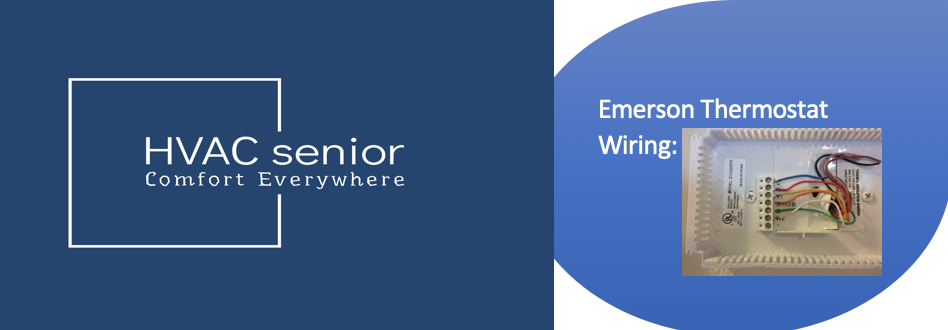If you’ve noticed the metal fins on your air conditioner starting to crumble, bend, or corrode, you’re not alone. These fragile fins, though easy to overlook, play a critical role in how efficiently your air conditioner operates. When they start deteriorating, your system’s cooling power, airflow, and energy efficiency all suffer.
This complete guide explains:
- What air conditioner fins are and why they matter
- Why they break down or get weaker over time
- How to repair and protect them
- When to replace them
- Prevention advice for the long term
What Are Air Conditioner Fins?
Air conditioner fins are the thin metal strips (usually aluminum) that surround the evaporator coil indoors and the condenser coil outdoors of your AC unit. They serve to increase surface area and dissipate heat efficiently.
There are two main types:
- Evaporator Coil Fins – These are in your indoor unit and help take in heat from indoor air.
- Condenser Coil Fins – These are on the outdoor unit and release the absorbed heat into the outdoor air.
The fins are responsible for proper heat exchange. With them bent, crushed, or corroded, airflow and heat transfer are compromised, and the AC must work harder.
Why Air Conditioner Fins Start Crumbling
There are several reasons why your air conditioner fins flake, rust, or crumble over time. Understanding the reasons tells you whether you can repair them — or replacement is the better option.
1. Corrosion and Oxidation
The most common reason for crumbling fins is corrosion in wet or salty conditions such as coastal regions. Moisture and air pollutants react with the aluminum, causing oxidation – a white, powdery residue that weakens the metal.
Over time, the fins become brittle and start breaking apart at the slightest touch or brushing.
2. Chemical Exposure
Severe cleaning solutions, coil cleaners, or even acid rainwater can corrode aluminum fins. People sometimes use strong chemicals or pressure washers to clean their coils, which also accelerates metal degradation.
3. Physical Damage
Fins are extremely fragile — it doesn’t take much to bend or flatten them. Fins can become damaged by:
- Lawn equipment debris
- Hail or falling objects
- Rough cleaning or brushing
- Animals or birds nesting near the condenser
Once damaged or bent, these fins impede airflow and cooling efficiency.
4. Wear and Tear with Age
Like all HVAC units, air conditioner fins simply degrade with age. Units over 10–15 years old may have fins that are oxidized, brittle, or disintegrating despite regular maintenance.
5. Neglect or Poor Maintenance
If not regularly cleaned, dust, dirt, and debris accumulate on the fins. The accumulation holds moisture, which speeds up corrosion and leads to crumbling with time.
Also read: Air Conditioner Making Pulsating Noise
Signs Your Air Conditioner Fins Are Crumbling
You might not notice damage immediately, but here are clear warning signs:
- Fins flake or break when touched
- White or gray powder on the coil surface (oxidation)
- Reduced cooling performance
- Higher energy bills (system working harder)
- Inconsistent temperature inside the house
- The outdoor fan runs constantly
If these signs appear, inspect your outdoor condenser or indoor evaporator coils closely.
Is It Safe to Run an AC with Crumbling Fins?
You can, but it’s not recommended.
While your air conditioner might still cool, crumbling fins reduce the unit’s efficiency and cause the compressor to overheat due to poor heat exchange. Over time, this leads to higher energy use, longer run times, and premature system failure.
Running your AC like this is the same as trying to cool your home with half the radiator blocked — it will work, but badly and at a cost.
How to Fix Crumbling Air Conditioner Fins
You can repair the fins or not, depending on how badly they’re damaged. You can restore minimal crumbling or bending; extensive corrosion may require professional coil replacement.
Step 1: Turn Off Power
Before attempting any repair or inspection, shut off power at the breaker box and unplug the unit to prevent electric shock.
Step 2: Inspect the Fins
Inspect both the outdoor condenser coil and indoor evaporator coil.
Use a flashlight — if you see white corrosion, crumbling aluminum, or missing fins, the issue is serious.
Step 3: Gently Clean the Fins
Use a soft brush or vacuum cleaner with a brush attachment to remove loose dirt.
Use no harsh cleaners; instead, use a mild coil cleaner made for aluminum.
Rinse with a garden hose (low pressure) with caution.
Never use a pressure washer — it will completely destroy the fins.
Step 4: Straighten Bent Fins
If the fins are only bent or crushed, use a fin comb to straighten them. This improves airflow and enables the coil to transfer heat effectively again.
Tip: Match your comb size (10, 12, or 14 fins per inch, for instance) to your coil type for the best results.
Step 5: Apply a Protective Coating
After cleaning, apply a coil protective coating or anti-corrosion spray (available at HVAC supply stores). These coatings inhibit future oxidation and crumbling.
Step 6: Replace Severely Damaged Coils
If the fins are missing large areas, soft, or crumbling, cleaning does no good. Replacement of the coil is the only solution.
Replacement of the condenser or evaporator coil can cost:
- $600–$1,200 for residential systems
- $1,500+ for larger systems or older systems
It’s costly but can restore efficiency and extend the life of the system.
When to Call a Professional
Call an HVAC professional if:
- More than 25% of the fins are damaged
- The unit is still under warranty (DIY repair may void it)
- There’s refrigerant leakage around the coils
- You see rust on copper tubing or fittings
A technician can determine whether coil cleaning, repair, or total replacement is most cost-effective.
How to Prevent Air Conditioner Fins from Crumbling
You can extend your AC’s lifespan and protect the fins with regular maintenance and some preventive measures.
1. Schedule Regular Maintenance
Have your system inspected and cleaned professionally at least once a year (preferably before summer). Technicians will clean the coils gently and apply corrosion inhibitors where needed.
2. Keep the Unit Clean and Dry
Trim plant growth around your outdoor condenser. Give at least 2 feet of clearance on all sides for good airflow. Keep the surrounding area free of grass clippings, mulch, and leaves that can hold water.
3. Use the Right Cleaners
Only use AC-specific coil cleaners that are pH neutral. Avoid using alkaline or acidic household cleaners that will corrode aluminum.
4. Protect from the elements
If you live in a region near the ocean or in a high-humidity zone:
Apply a coil protectant spray twice a year.
Use a breathable condenser cover in the off-season.
Never use fully sealed plastic covers — they trap moisture and promote corrosion.
5. Change Filters Regularly
A dirty air filter restricts airflow, causing coils to overheat and wear out faster. Replace filters every 1–3 months, depending on need.
6. Never Pressure Wash
Pressure washers and stiff brushes will crush or even pull off fins entirely. Clean coils with soft-bristle brushes or low-pressure water always.
Should You Replace the Whole AC Unit?
If your air conditioner is over 10–15 years old and the coils or fins are heavily deteriorating, it could be more economical to install a new unit altogether.
Why?
- New units feature non-corrosive materials and protective coatings
- They’re more energy efficient (SEER ratings)
- You enjoy better refrigerant technology and lower maintenance costs
Get an HVAC professional to perform an efficiency test — they can recommend whether replacement is more economical in the long run.
Key Takeaway: Never Overlook Deteriorating Fins
Deteriorating fins are a clear warning sign that your air conditioner is losing efficiency and could be nearing its useful lifespan. Whether due to corrosion, old age, or inadequate cleaning, the issue should never be ignored.
Address it early to avoid:
- Compressor overheating
- Higher energy bills
- Expensive coil or system replacement
Final Thoughts
The fins on your air conditioner may seem minor, but they’re crucial to your system’s cooling capability. When these fins start to crumble, it’s due to corrosion, neglect, or age — and the sooner you act, the less the damage.
With cleaning, protective coatings, and maintenance schedules, you can restore airflow, extend equipment life, and prevent future crumbling.
If the corrosion is bad, it could be the better choice to install a new unit or coil. Either way, addressing deteriorating fins sooner rather than later keeps your home comfortable, your bills low, and your system running efficiently.









